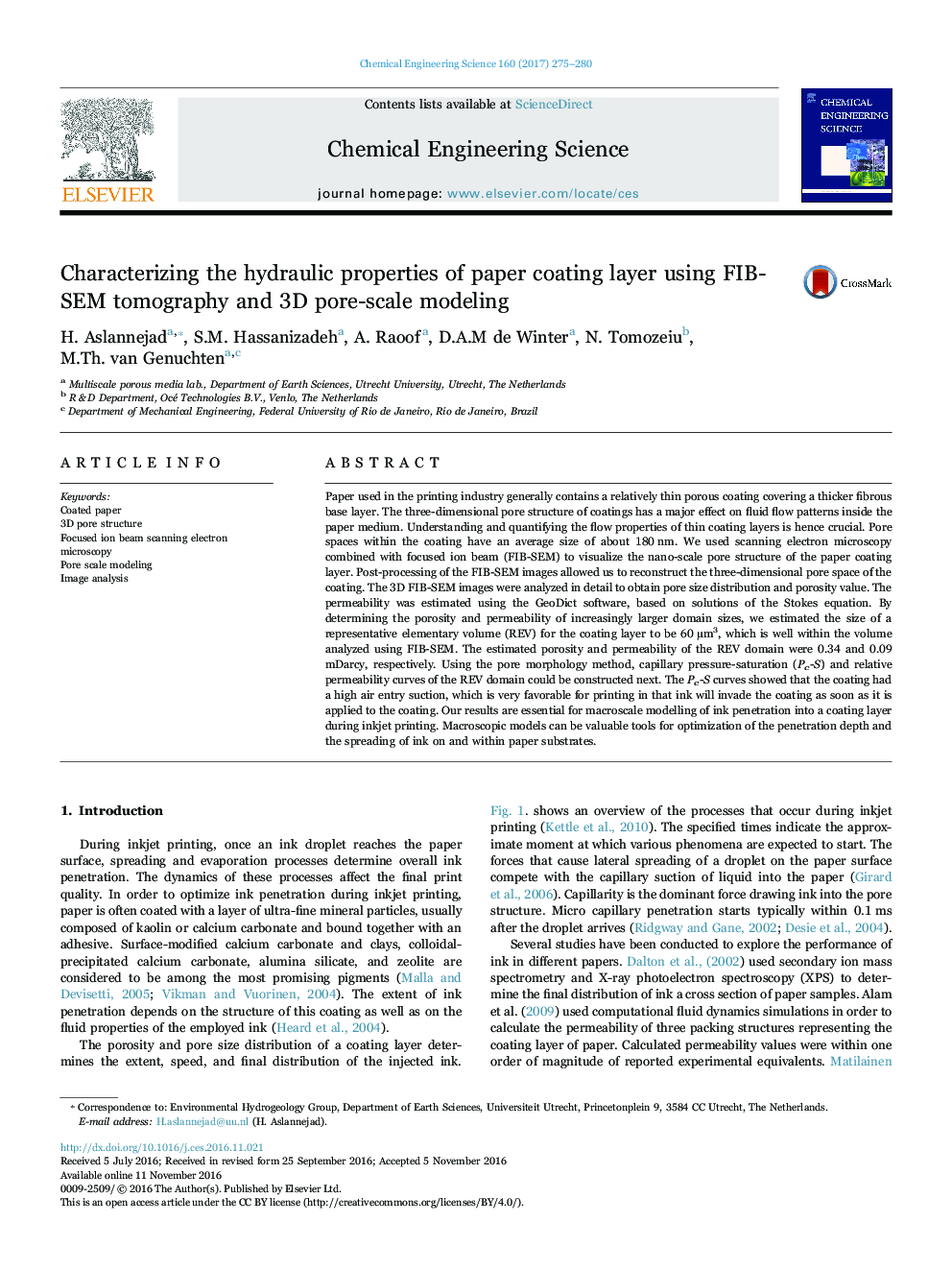| Article ID | Journal | Published Year | Pages | File Type |
|---|---|---|---|---|
| 6467758 | Chemical Engineering Science | 2017 | 6 Pages |
â¢Combined FIB-SEM and image analysis yielded detailed pore space characterization of a coating layer, which is necessary for pore-scale modeling.â¢Analysis of the pore size distribution of a glossy paper coating layer showed a mean pore size of 180 nm.â¢The porosity and permeability of various domain sizes revealed an REV of 60 µm3.â¢Capillary pressure-saturation and relative permeability curves were calculated.
Paper used in the printing industry generally contains a relatively thin porous coating covering a thicker fibrous base layer. The three-dimensional pore structure of coatings has a major effect on fluid flow patterns inside the paper medium. Understanding and quantifying the flow properties of thin coating layers is hence crucial. Pore spaces within the coating have an average size of about 180 nm. We used scanning electron microscopy combined with focused ion beam (FIB-SEM) to visualize the nano-scale pore structure of the paper coating layer. Post-processing of the FIB-SEM images allowed us to reconstruct the three-dimensional pore space of the coating. The 3D FIB-SEM images were analyzed in detail to obtain pore size distribution and porosity value. The permeability was estimated using the GeoDict software, based on solutions of the Stokes equation. By determining the porosity and permeability of increasingly larger domain sizes, we estimated the size of a representative elementary volume (REV) for the coating layer to be 60 µm3, which is well within the volume analyzed using FIB-SEM. The estimated porosity and permeability of the REV domain were 0.34 and 0.09 mDarcy, respectively. Using the pore morphology method, capillary pressure-saturation (Pc-S) and relative permeability curves of the REV domain could be constructed next. The Pc-S curves showed that the coating had a high air entry suction, which is very favorable for printing in that ink will invade the coating as soon as it is applied to the coating. Our results are essential for macroscale modelling of ink penetration into a coating layer during inkjet printing. Macroscopic models can be valuable tools for optimization of the penetration depth and the spreading of ink on and within paper substrates.
Graphical abstractPlots of calculated porosity and permeability values for different domain sizes of the coating.Download high-res image (165KB)Download full-size image
